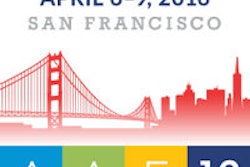
SAN ANTONIO - The best uses of established local dental anesthetics, as well as the future use of nasal spray and long-acting anesthetics, were the focus of an opening-day session at the ADA 2014 annual meeting.
 Stanley Malamed, DDS, discussed the range of established local dental anesthetics and the coming use of nasal spray anesthetics and long-acting anesthetics at ADA 2014.
Stanley Malamed, DDS, discussed the range of established local dental anesthetics and the coming use of nasal spray anesthetics and long-acting anesthetics at ADA 2014.Stanley Malamed, DDS, an emeritus professor of anesthesia at the University of Southern California Herman Ostrow School of Dentistry, discussed the range of established local dental anesthetics and the coming use of nasal spray anesthetics and long-acting anesthetics at a well-attended session, titled "What's New in Dental Local Anesthesia."
Local anesthetics are the safest and most effective drugs in medicine for the prevention and management of pain, Dr. Malamed noted.
Anesthetics cause numbness and remove the sensation of pain, while analgesics are painkilling drugs, he explained. The best analgesic for pain control is ibuprofen, he said.
"Our goal is to not hurt the patient," he pointed out. "We want to do high-quality dentistry painlessly."
Lidocaine
The first local anesthetic was a cocaine/epinephrine combination in 1880. In 1948, lidocaine, which works faster and longer, was introduced to the medical market.
Lidocaine (1%) is the No. 1 drug on the market for local anesthetics, and 300 million cartridges are sold in the U.S. annually. It is a "roadblock" that prevents pain impulses from reaching the brain. "It's a very, very safe drug," Dr. Malamed said.
A 2% lidocaine solution is the lowest effective concentration for pain control, which lasts about an hour and is good for pulpal anesthesia, he said.
Lidocaine is especially good for treating pediatric patients when the procedure involves one or more quadrants.
Mepivacaine and others
Mepivacaine (3%) is the most widely used local anesthetic and lasts about 30 minutes, making it especially useful for shorter duration procedures. It is good for children when only one quadrant is being worked on, Dr. Malamed noted.
“Our goal is to not hurt the patient. We want to do high-quality dentistry painlessly.”
Prilocaine (4% with epinephrine) is good for pulpal procedures, producing a nerve block that lasts about an hour, and is good for two to three hours for soft-tissue procedures.
Bupivacaine is a long-duration anesthetic and is four times as potent as lidocaine. For pulpal work, it is good for about 90 minutes; for soft tissues, its duration lasts up to 12 hours. However, due to its strength and duration, it is not recommended for children.
Articaine (4% with epinephrine), the first and only anesthetic drug designed specifically for dentistry, was introduced in Germany in 1973. It's good as a pulpal anesthetic and nerve block, lasting about an hour. For soft tissues, it's good for up to five hours.
Articaine HC1 is now being used for mandibular infiltration in adults, Dr. Malamed said.
"Endodontists love this drug, especially for pediatric patients when you're working on more than one quadrant," he noted.
It is also preferred for pregnant women and nursing mothers and also for mandibular infiltration on adult patients, he said.
Pediatric patients
Dr. Malamed warned against using anesthetics for all four quadrants in pediatric patients.
"Patients will beg you to do as much work as possible in one visit, but don't do it," Dr. Malamed stressed. "That's when problems occur. Make them come back."
Dentists often panic when sedated children have breathing problems, he noted.
"They call 911, and when the paramedics arrive, they've found dentists and their staff sitting in chairs crying or praying," Dr. Malamed recalled of legal proceedings where he testified as an anesthesia expert.
Off/on-switch drugs
A good "off-switch" drug for reversing anesthetics is phentolamine mesylate, and it is especially good for allergic reactions, according to Dr. Malamed. OraVerse (Septodont) is a good for local anesthetic reversal, for a number of reasons:
- Cuts numbness duration in half.
- Good for pediatric patients because it prevents them from chewing on their lips and tongues.
- Good for medically compromised patients, such as those with diabetes, and special needs patients.
- Good for nonsurgical periodontics.
- Good for postmandibular implants.
Good "on-switch" drugs that speed up the effect of anesthetics are buffered alkalinized local anesthetics.
Although there's no scientific evidence to support the belief that they speed up the onset on anesthetics, Dr. Malamed swears by them. "When I go to the clinic, it works faster and better," he said.
Future anesthetics
Next year, intranasal anesthetic administration (nasal sprays) will come to dentistry, Dr. Malamed said, because nasal membranes are highly vascular and absorb drugs quickly. Drugs containing midazolam, which were first used in emergency medicine for seizures, will be especially useful for pediatric patients.
They will also be useful for profound pulpal procedures, he said.
Tetracaine (3%) has a track record of being safe and effective, and it is commonly used in ear, nose, and throat surgeries. It also contains oxymetazoline, the active ingredient in nasal decongestants.
A nasal spray anesthetic by St. Renatus should be on the market by mid-2015, Dr. Malamed said.
Dr. Malamed also mentioned two long-lasting anesthetics. Exparel (Pacira Pharmaceuticals), now used mainly in medicine, has a duration of more than 72 hours. And neosaxitoxin is a long-lasting anesthetic and analgesic, he said.
Lastly, he pointed out the beneficial aspects of nitrous oxide. "I beg dentists to use nitrous because it turns on and off quickly," Dr. Malamed said.


















